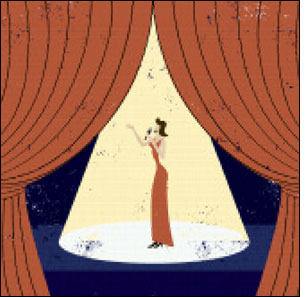Aug 01, 2011Presented below is part nine of an 11-part series examining the use of radio frequency identification for unexpected applications. In this chapter, we consider RFID's use in the arts.
76. Enhancing Performers' Voices
At a performance of Carmen at London's O2 arena, the arias had a ring of authenticity. The opera singers were fitted with RFID tags, and a sound-locating system projected their voices to the 17,000 people in the audience, as if emanating directly from their exact location on stage. (See RFID Helps Focus Sound at Opera Productions.)
77. Monument Preservation
To prevent the medieval stone walls surrounding the Tower of London from degrading, the Historic Royal Palaces is monitoring the environment with Wi-Fi temperature, humidity and light sensors. The real-time data lets the organization adjust dehumidifiers, heaters or coolers, to respond to changing conditions. (See RFID Watches Over the Tower of London and Its Artwork.)
78. Guided Tours
Tens of thousands of people each year visit the Vyšší Brod Cistercian Abbey to see its churches, chapels and grounds. The monks provide visitors with devices equipped with Near-Field Communication technology, so they can learn about the 13th-century Czech monastery in their own language. (See Czech Monks Look to RFID for Guidance.)
Museum-goers at the Kunstmuseum St. Gallen, in Switzerland, wore gloves with RFID tags and wireless biometric sensors, so researchers could see how they responded to the artwork. The system identified their location, to determine which specific artworks they were viewing, and for how long. It also tracked the electrical conductivity of their skin and their heart rates, to determine cognitive stimulation and emotional excitement. (See RFID and Sensors Illustrate Art's Impact on People.)
80. Taking Exhibits on the Road
Arts and Exhibitions International uses RFID technology to protect the treasure of King Tutankhamun's tomb as the artifacts are displayed at locations across the world. The traveling security system can be moved easily from one muesum to the next. The system triggers an alarm if it determines an object has been touched or a display case has been opened. (See RFID Protects Tut's Treasures.)
81. Artful Shopping
Granite State Metal Works, a New Hampshire art gallery and studio, gives potential customers RFID-enabled PDAs, so they can learn about the tagged artwork they may be interested in purchasing without having to talk with a salesperson. (See RFID for the Art Shy.)
Click here to read about RFID's use in other unexpected applications.
Illustration: iStockphoto

